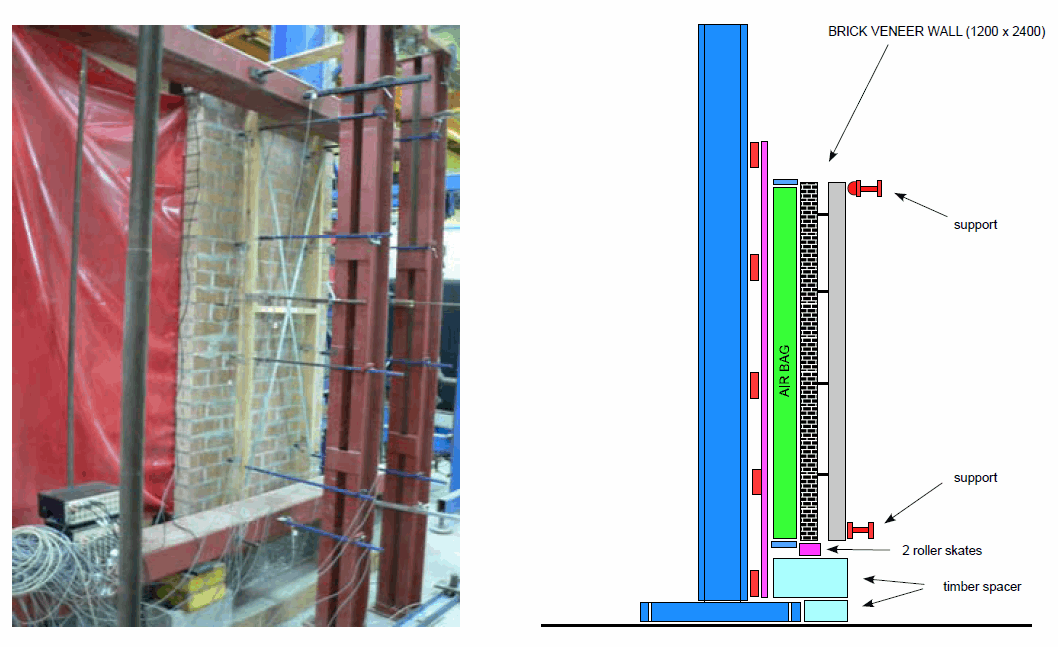A.W. Page1, G. Simundic2 and M. Masia3
- Emeritus Professor, Centre for Infrastructure Performance & Reliability, School of Engineering, the University of Newcastle, University Drive, Callaghan, NSW, 2308, Australia, adrian.page@newcastle.edu.au
- Professional Officer, Centre for Infrastructure Performance & Reliability, the University of Newcastle, goran.simundic@newcastle.edu.au
- Senior Lecturer, Centre for Infrastructure Performance and Reliability, The University of Newcastle, mark.masia@newcastle.edu.au
ABSTRACT
The performance of both cavity and veneer wall systems is critically dependant on the effective performance of the ties which connect the outer and inner leaves. In veneer construction the ties are the principal means of support of the external masonry leaf as they transfer the veneer loads to the structural back-up frame. In cavity construction, the ties allow the sharing of load between the two masonry leaves, with the tie forces being influenced by the relative stiffness of the leaves and the nature of the support for each leaf.
In recent years there have been attempts to model this behaviour analytically with varying degrees of sophistication. These studies have shown that the distribution of forces in the ties is dependant on a range of factors, with the tie force certainly not just being a function of the tributary loading area for the tie.
The Masonry Research Group at the University of Newcastle is involved in an on-going study of wall tie behaviour with a view to developing more realistic wall tie design rules. Some results on the behaviour of ties in cavity walls have been presented previously. This paper reports a study on typical Australian brick veneer walling systems which has concentrated on developing techniques to accurately monitor individual tie forces in veneer walls subjected to lateral loads. A convenient method for measuring individual tie forces is presented, together with confirmation that tie force redistribution occurs in veneer systems once ties reach their individual capacity.
KEYWORDS: wall ties, veneer walls, forces
C3-3



